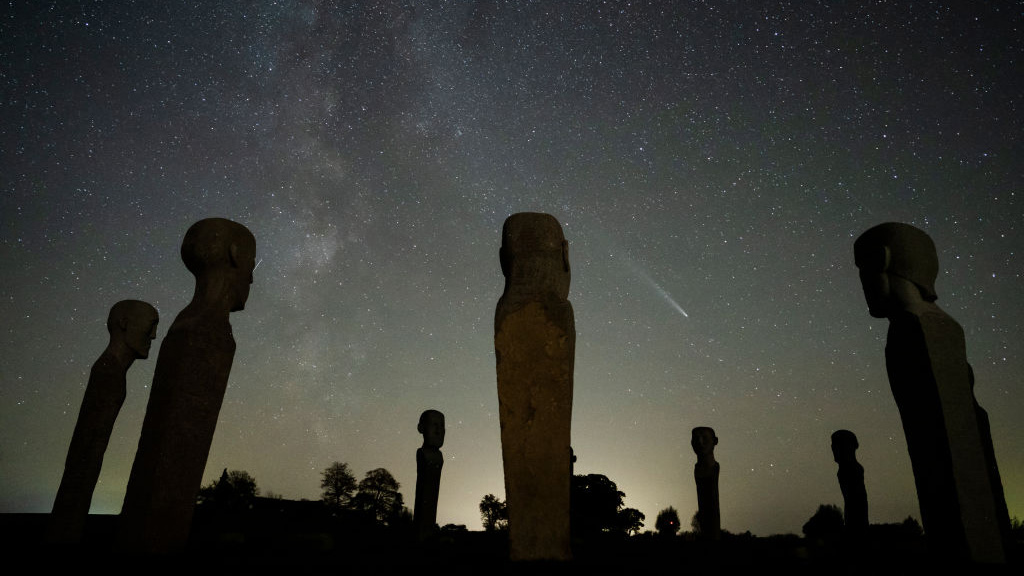
Although Comet Tsuchinshan-ATLAS' star is fading, it's still very possible to photograph the year's most magnificent comet before it disappears for millennia. And here's the proof. This stunning photograph (above) courtesy of Mads Claus Rasmussen was captured on October 22 on the Danish island of Lolland. The excellent foreground interest is a monument called Dodekalitten, which frames the comet and its glorious tail beautifully.
The comet was projected to be at its brightest around October 12 when it passed closest to Earth and it certainly didn't disappoint. And despite a brief interference from the Hunter's 'supermoon' full moon, spoiling dark skies, the comet is once again ripe for the picking as far as astrophotographers are concerned.
Although the comet has arguably exceeded expectations, it's now hurtling away from Earth and gradually fading in the process. According to Space.com, you'll likely need a telescope to view it beyond early November and if you miss your chance to photograph the spectacle, well, you'll only have to wait another 80,000 years to see it again.
Thankfully, I've compiled a handy guide for how you can get a photo of Comet Tsuchinshan-ATLAS tonight.
Stellar photographs of Comet Tsuchinshan-ATLAS
The comet really has captured the hearts and minds of astrophotographers and casual photographers, alike. Plenty of people have captured the celestial object on the best cameras for astrophotography – of course – but a huge number of stargazers have turned to the best camera phones to capture the once-in-a-lifetime event. Don't think it's possible to capture a comet on an iPhone? Check out the incredible image (below) from @bytemarks, captured from Hawaii's Pearl City.
Photographers have been getting really creative, too. Major kudos to @melissawambolt for combining astrophotography and portraiture, with this extremely creative exposure taken in Arizona. The subject is holding the blazing comet in the palm of their hand – that must have taken some planning!
Perhaps some of the most spectacular photographs of the comet I've seen have included it alongside the Milky Way. This stellar selection of images from @the_sanchz uses a cactus as foreground interest. The photos were captured in Arizona, using a Nikon D750 and Sigma 14-24mm, Nikon 50mm, Nikon 85mm and Tamron 70-200mm lenses. Both the Milky Way and comet look sharp and bright, and the gorgeous colors suggest some very tasteful editing.
Finally, here's @vincentzhangyi's spellbinding effort capturing Comet Tsuchinshan-ATLAS in situ from Ontario. As he put it; "capturing a comet and the Milky Way in the same frame has been one of the most unique experiences since I began astrophotography." The 15-minute timeframe he had to capture this image was sandwiched between astronomical twilight and moon rise. He said; "Although the weather wasn't perfect, I'm thrilled to have captured this moment and to share it with you."
This image looks pretty perfect to me Vincent!
If you're interest in astrophotography, check out the best telescopes and the best star tracker camera mounts.







